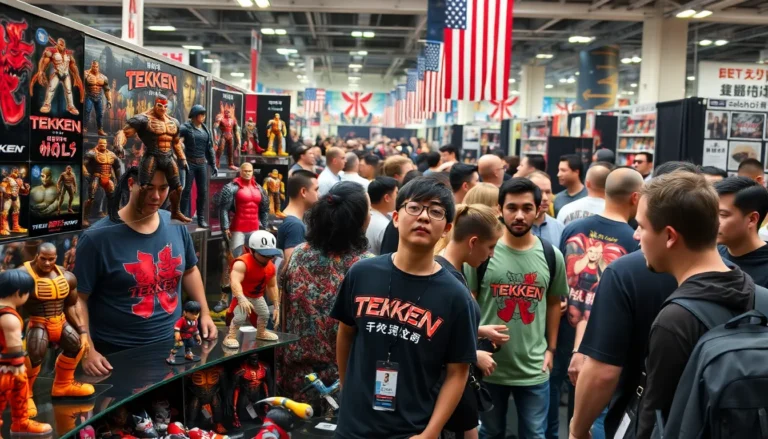Table of Contents
ToggleIn the whimsical world of MapleStory, where cute characters battle monsters and collect treasures, lies an intricate economy that rivals some real-world markets. Players don’t just level up; they trade, invest, and strategize to make their virtual fortunes. But hold onto your hats—this isn’t just a game of slaying monsters; it’s a high-stakes dance of supply and demand that could make Wall Street blush.
Overview of MapleStory Economy
MapleStory’s economy operates on principles of supply and demand, resembling traditional financial markets. Players create a dynamic marketplace where trading items, currencies, and services plays a crucial role in building wealth. Specific game mechanics, such as crafting, enhance the economic experience by allowing players to produce valuable items.
The in-game currency, Mesos, serves as the backbone of economic transactions. Players earn Mesos through various activities, including defeating monsters, completing quests, and selling items at player-run shops. The fluctuating supply of various items affects their prices, introducing a layer of strategy for savvy traders.
Investment opportunities exist in rare items and resources, where timing and market trends dictate financial success. Additionally, events and game updates can significantly impact the economy, leading to sudden price shifts. Players often analyze trends, making informed decisions to maximize profits.
Marketplaces within the game, such as the Free Market and the Auction House, facilitate buying and selling. Competition among players often drives prices down or up, depending on demand. Observing these trends assists players in determining the optimal time to buy or sell.
The economy encourages social interaction and cooperation among players. Forming guilds and joining communities can provide valuable insights for trading strategies. Engaging with others leads to shared knowledge regarding market fluctuations and profitable ventures.
Key Elements of the MapleStory Economy

The MapleStory economy is anchored by several critical components that shape player interactions and strategies.
Currency and Its Importance
Mesos serve as the primary currency within MapleStory. Players acquire Mesos through various activities, including battling monsters and selling loot. The amount of Mesos influences a player’s ability to trade and invest effectively. Market fluctuation frequently impacts the purchasing power of Mesos, introducing challenges for players looking to maximize their resources. Investing in valuable items requires understanding market trends, as prices can change rapidly based on supply and demand dynamics. Rare items tend to command higher prices, reinforcing the need for players to stay informed about market conditions.
Trading System Mechanics
The trading system in MapleStory revolves around a few key mechanics. Players can utilize multiple platforms, such as the Free Market and Auction House, to engage in buying and selling. Competition among players influences pricing strategies, as supply and demand determine item value. Listing items competently enhances visibility and effectiveness within the marketplace. Players must analyze market trends to identify successful trading opportunities. Strategic trading can lead to wealth accumulation, allowing players to navigate the economy’s complexities effectively. Prices shift with game updates and events, further complicating trading decisions.
Market Dynamics in MapleStory
Market dynamics in MapleStory are driven by various factors influencing player interactions and trading behavior. Understanding these dynamics can lead to more informed strategies for wealth accumulation.
Supply and Demand Factors
Supply and demand significantly shape the MapleStory marketplace. Players create and trade items, creating a fluid economic environment. When item availability increases, prices typically decrease. Conversely, sparse availability tends to inflate prices. The in-game economy often mirrors real-world principles, where player behaviors directly impact market trends. Certain resources become scarce during peak gameplay hours, leading to rapid price escalation. Buying low and selling high remains a core strategy for players seeking profit. Recognizing these trends can benefit traders in maximizing their returns.
Influential Events and Updates
In-game events and updates frequently alter market conditions in MapleStory. Developers often introduce new items, quests, or seasonal events, causing sudden shifts in demand. Players may find rare items trending in popularity due to these changes, creating lucrative trading opportunities. Major updates often prompt players to reassess item values, further complicating the trading landscape. Timing becomes crucial as players capitalize on new content and limited-time offers. Economic fluctuations during these periods require quick thinking and adaptability. Keeping track of these developments is essential for success within the virtual economy.
Role of Players in the Economy
Players play a crucial role in shaping the MapleStory economy. Their decisions directly influence market dynamics, affecting item availability and prices.
Player-Driven Markets
Player participation creates vibrant markets in MapleStory. Trading platforms like the Free Market and Auction House thrive on transactions between players. Players set prices based on supply and demand, often reflecting real-world economic principles. Item scarcity caused by high demand can spark competitive bidding, driving prices higher. Players actively trade a variety of goods, ranging from weapons to potions, each holding different value based on market trends. Additionally, gathering and crafting enhance market dynamics, introducing unique items that impact player strategies. Continuous engagement in trading fosters a fluid economy where players can capitalize on emerging opportunities.
Impact of Player Choices on Prices
Decisions made by players have significant effects on item pricing. When a large number of players flood the market with a particular item, prices often drop. Conversely, limited supply can lead to inflation as players compete for rare items. Even seasonal events can shift demand dramatically, influencing how much players are willing to pay. Identifying these patterns allows savvy traders to buy low and sell high. Price fluctuations act as signals, encouraging players to adapt their strategies accordingly. Players closely monitor trends, leveraging their insights to maximize profits while navigating the market’s ever-changing landscape.
The MapleStory economy thrives on the active participation of its players. Their trading decisions and strategies shape market dynamics in real-time. Understanding supply and demand is essential for navigating this vibrant marketplace, where opportunities for profit arise from careful analysis of trends and player behavior.
As players engage with the economy, they must remain adaptable to fluctuations caused by in-game events and updates. Those who can anticipate changes in item availability and market conditions will find themselves at a significant advantage. Ultimately, success in MapleStory’s economy hinges on a player’s ability to recognize patterns and seize opportunities, creating a rich and rewarding experience within this virtual world.







